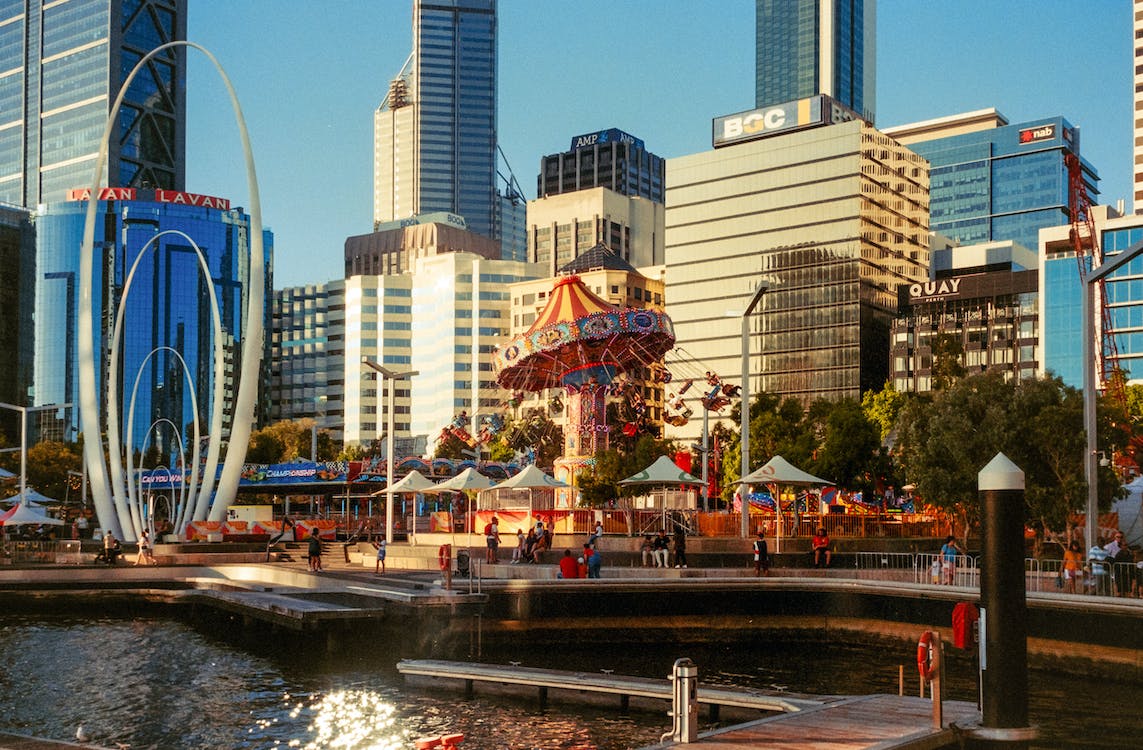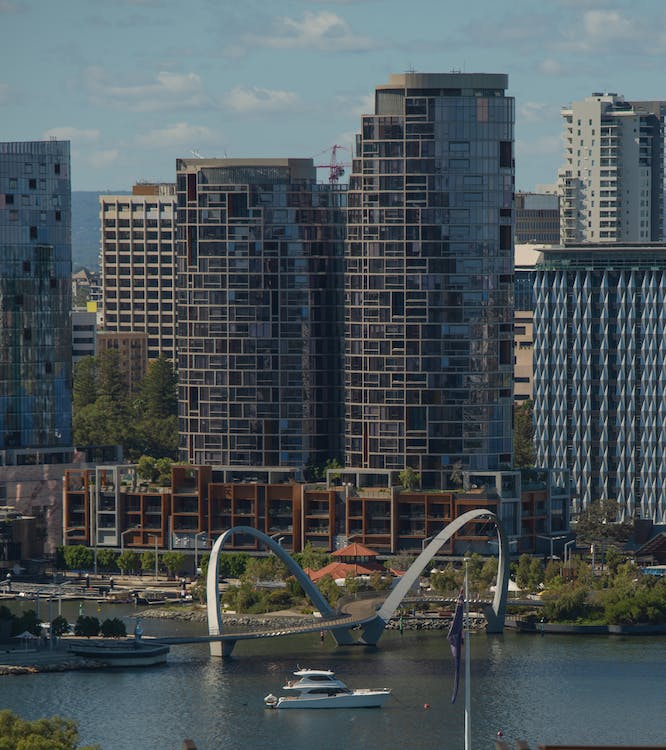Perth vs. Houston: Navigating Big City Feel in Australia

Perth offers a coastal lifestyle with roughly 310 people per square kilometer, growing toward about 2.3 million residents by 2025.
You'll experience hot 31–32°C summers and mild winter days near 13–18°C, while Houston follows opposite seasonal timing in the Northern Hemisphere. Perth's economy is strongly linked to resources and mining with ongoing multi-billion-dollar investment, while maintaining a more walkable core than Houston's largely car-dependent design.
Both cities showcase unique cultural heritages, but Perth's relative affordability (vs. Sydney or Melbourne) and easy beach access create a distinctly Australian coastal urban experience.
Population Dynamics: Comparing Density and Growth Patterns
https://www.youtube.com/watch?v=iSvUp3BNOB8
Boom-town Perth stands as Australia's fourth-largest city with a steadily expanding population expected to reach between 2.17 and 2.3 million by 2025. You'll find the city growing at roughly 1–2% annually, with longer-term projections placing the metro around 3 million in the 2030s during stronger growth periods.
The city's density hovers around 310–318 people/km², with most residents concentrated along the Swan Coastal Plain. Migration trends heavily influence this growth, with the mining and resources sectors drawing both interstate and international relocation. The current population reflects dramatic expansion from around 400,000–500,000 residents in the early 1950s, underscoring Perth's transformation over seven decades.
This population surge carries significant socioeconomic implications, particularly in housing and infrastructure development. Unlike Australia's interior, Perth's coastal urban concentration fits the national pattern in a country where inland regions remain sparsely populated.
Seasonal Contrasts: When Summer Meets Winter Across Hemispheres
When you consider Perth and Houston's opposing hemispheric locations, you'll notice their seasons run counter to each other. While you're enjoying Perth's sun-soaked January beach days, Houstonians are navigating cooler mid-winter conditions.
Six months later, you'll find Perth's mild July winter (around 13°C mean) contrasting with Houston's humid July heat near the upper 20s°C.
These inversions shape agricultural calendars in both regions—Perth growers plant winter crops during Houston's warm-season growth, and vice versa. Perth's relative value for money makes it attractive for travelers across the year.
Seasonal tourism also diverges: Perth's prime beach period runs December–February when Houston's outdoor pace slows, while Houston's pleasant late-fall to winter stretch coincides with Perth's wetter months—creating complementary travel windows.
Economic Landscapes: Mining Booms vs. Diversified Industries
Beyond seasonal cycles, the economic engines powering Perth and Houston reveal differences in industrial composition and development paths. Perth's economy remains anchored to the mining/resources sector with continuing multi-billion-dollar capital outlays, while Houston boasts a more diversified portfolio spanning energy, aerospace, healthcare, and tech.
You'll notice Perth's efforts toward export diversification, with healthcare and agri-food moderating traditional boom-bust dynamics. The sector continues to add jobs as new projects come online, generating spillovers across construction and transport. Perth's median house price has proved resilient, tracking in the high-$600,000s to low-$700,000s range by late 2024 despite commodity headwinds.
Houston's multi-industry profile offers greater insulation from commodity swings, whereas Perth's property and employment trends still move closely with resources—keeping it distinct within Australia's economic landscape.
Urban Planning and Transportation: Tale of Two City Designs

The contrast between Perth and Houston's urban form is clear in their layouts and transport systems. Houston famously lacks traditional zoning, relying on other codes to guide growth, while Perth uses conventional zoning to shape development and protect natural assets. If you're weighing which parts of Houston feel most walkable or transit-adjacent, this quick neighborhood rundown is handy for context.
Perth's layout around the Swan River supports a more walkable central area, contrasting with Houston's sprawling, polycentric pattern.
You'll find Perth's public transport anchored by an expanding heavy-rail (METRONET) network and buses, whereas Houston remains largely auto-oriented despite growing transit options.
Despite different densities (Houston city proper near 1,400–1,500 people/km² vs. Perth around 310 people/km²), both cities are working to better integrate transit and land use. Rather than numerical "walkability scores," the practical takeaway is that Perth's inner corridors generally feel more pedestrian-friendly than Houston's arterials.
Cultural Heritage and Demographics: From Indigenous Roots to Modern Diversity
Both Perth and Houston exhibit rich cultural tapestries shaped by Indigenous foundations and waves of immigration, though their demographics differ.
In Perth, you'll find the enduring presence of Whadjuk Noongar culture, with Aboriginal and Torres Strait Islander peoples comprising about 2% of residents. Their connection to Derbarl Yerrigan (Swan River) and seasonal traditions persists despite disruptions since 1829. Interpretive trails, festivals, and reconciliation initiatives increasingly feature in civic life, and archives such as Aboriginal History WA help preserve records.
Perth's population includes strong English, Scottish, Irish, Italian, Indian, and Chinese communities; English predominates linguistically while many languages flourish across suburbs. The city's multicultural events reflect growing diversity while honoring Noongar country on which Perth stands.
Lifestyle Comparison: Beach Living vs. Metropolitan Experience
Comparing lifestyle reveals different approaches to urban living, with Perth's beach-urban blend contrasting with Houston's inland metro character. Perth offers safe, accessible beaches like Cottesloe and Scarborough within easy public-transport reach, while Houston sits about an hour's drive from Gulf beaches such as Galveston.
Perth's Mediterranean climate supports much of the year outdoors, while Houston's summer humidity can limit comfort at peak times. You'll find strong community engagement in Perth's seaside suburbs through festivals and open-air markets, and waterfront projects that merge metropolitan convenience with coastal ambience.
Perth is among Australia's sunniest capitals, offering frequent clear days that enhance outdoor life.




